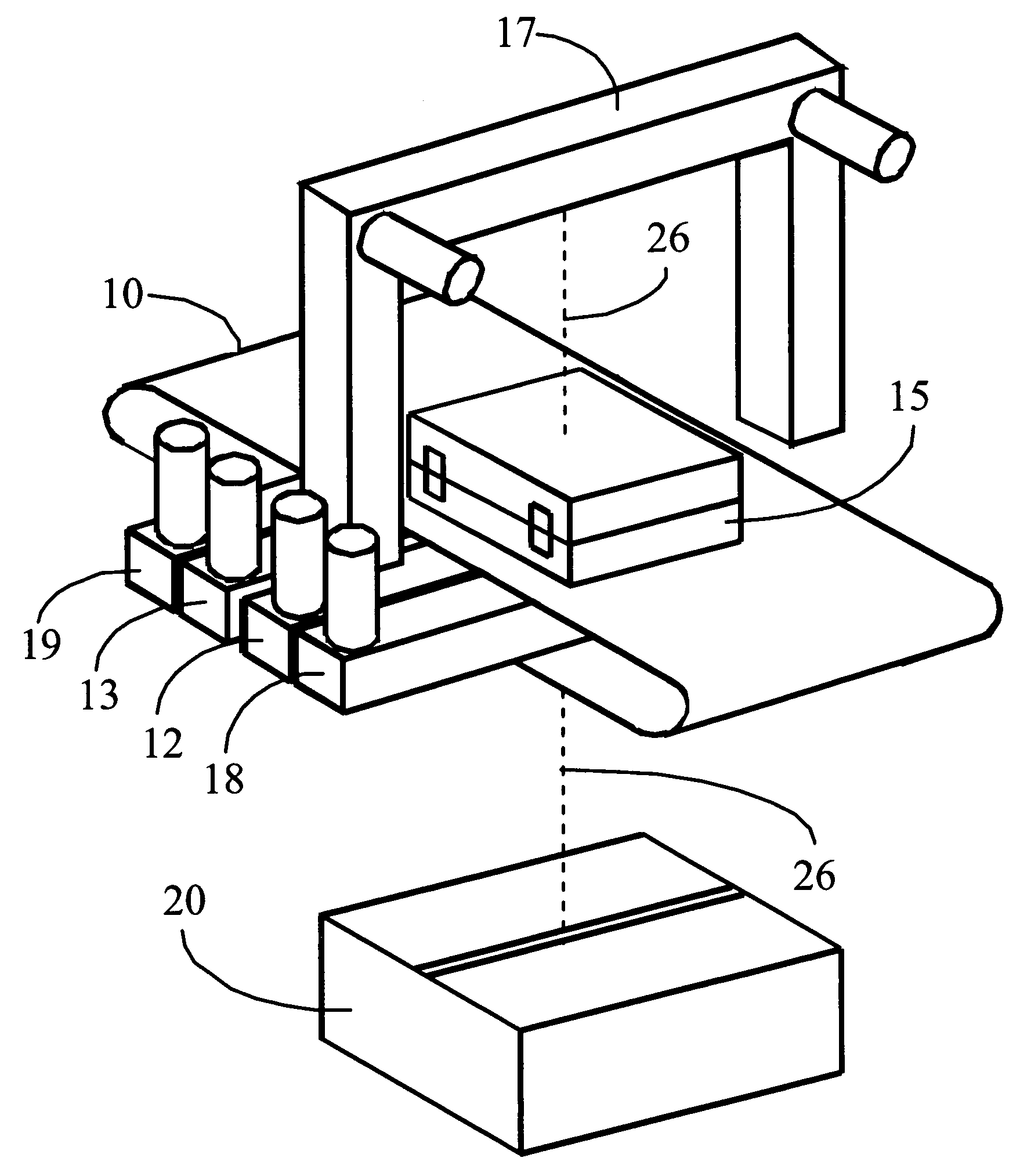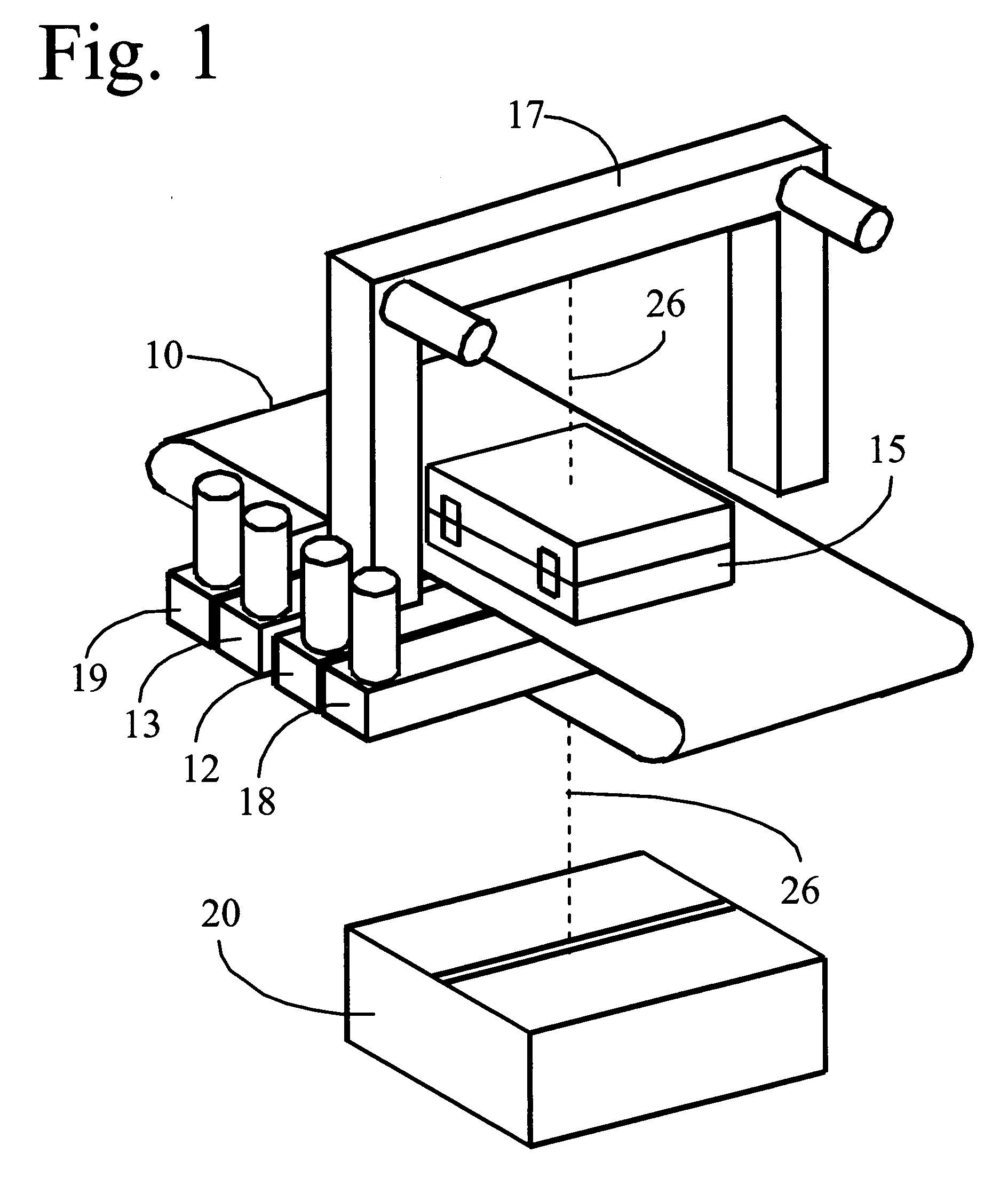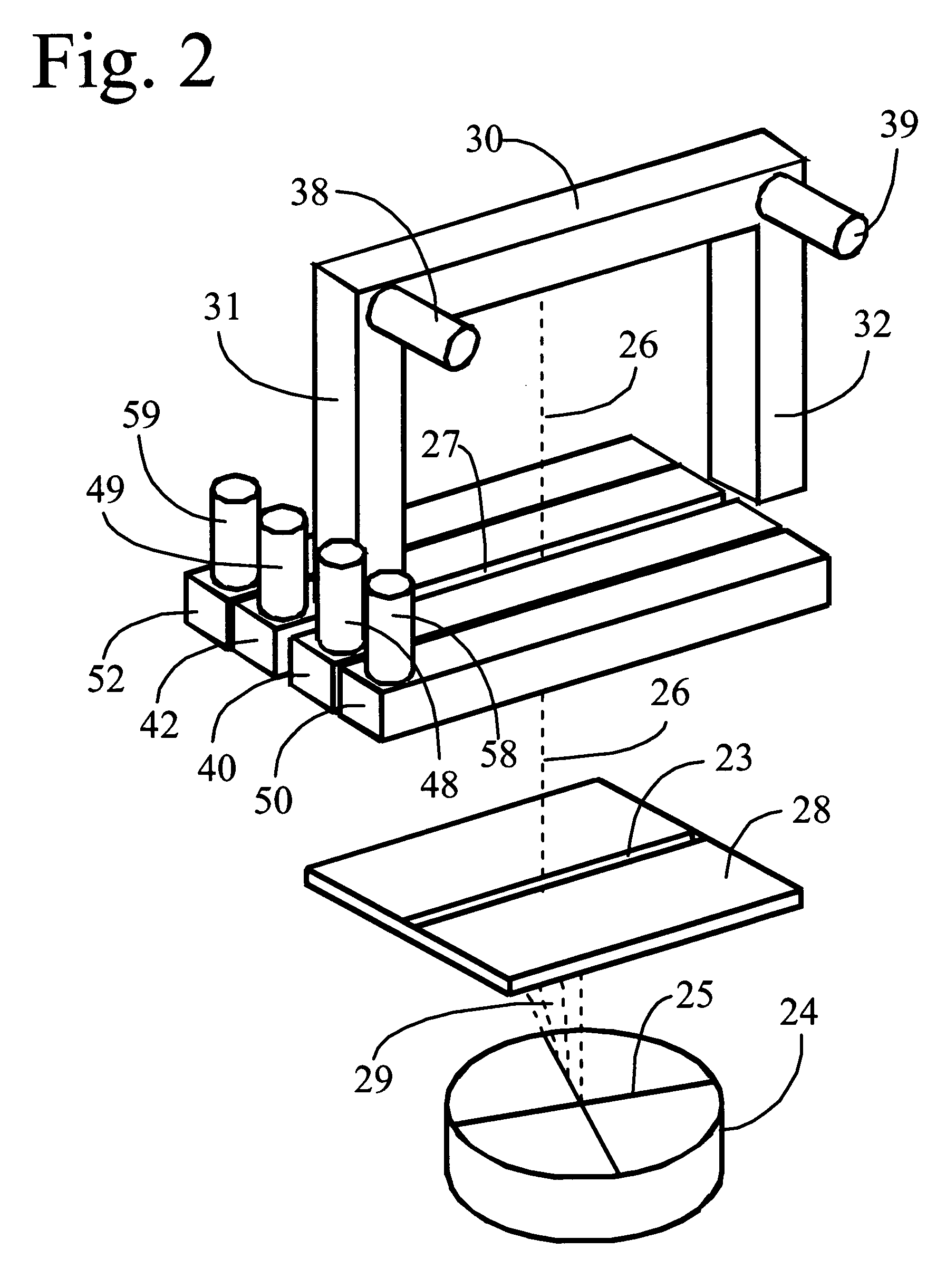Tomographic scanning X-ray inspection system using transmitted and compton scattered radiation
a technology of tomographic scanning and x-ray inspection, which is applied in the direction of material analysis using wave/particle radiation, x/gamma/cosmic radiation measurement, instruments, etc., can solve the problems of inability to count individual x-rays, high x-ray rate on scintillators, etc., to avoid artifacts in low z images, improve photon collection efficiency, and avoid high z images
- Summary
- Abstract
- Description
- Claims
- Application Information
AI Technical Summary
Benefits of technology
Problems solved by technology
Method used
Image
Examples
Embodiment Construction
[0031] The invention provides an apparatus and method for X-ray inspection systems that utilize radiation transmitted through and scattered from the object under inspection to detect weapons, narcotics, explosives or other contraband.
[0032] Specifically, as shown in FIGS. 1 and 2, the invention provides a tomographic scanning X-ray inspection system. The system has conveyor 10 for moving object 15 to be scanned though the system. Object 15 is typically an item of luggage such as a suitcase carried by a traveler. However, any other item such as cargo, freight, boxes, cartons, envelopes, crates, packages, personal articles, and the like, appointed for transport on aircraft, rail, ship, bus or other like public conveyance may also be scanned. The system is also useful for inspecting items to be carried into or delivered to any other public venue such as a courthouse, stadium, auditorium, or like facility. An X-ray generation device 20 generates a pencil beam of X-rays 26. Pencil beam ...
PUM
| Property | Measurement | Unit |
|---|---|---|
| angle | aaaaa | aaaaa |
| transmission | aaaaa | aaaaa |
| transmission image | aaaaa | aaaaa |
Abstract
Description
Claims
Application Information
 Login to View More
Login to View More - R&D
- Intellectual Property
- Life Sciences
- Materials
- Tech Scout
- Unparalleled Data Quality
- Higher Quality Content
- 60% Fewer Hallucinations
Browse by: Latest US Patents, China's latest patents, Technical Efficacy Thesaurus, Application Domain, Technology Topic, Popular Technical Reports.
© 2025 PatSnap. All rights reserved.Legal|Privacy policy|Modern Slavery Act Transparency Statement|Sitemap|About US| Contact US: help@patsnap.com



